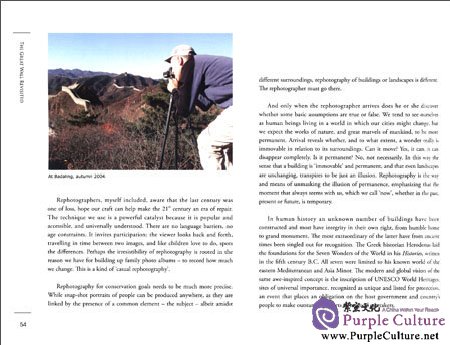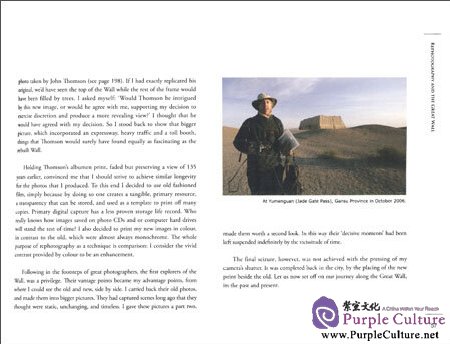Sample Pages Preview


Each segment presents itself as very tangible evidence of a protractedand violent cultural conflict that raged between China and neighbouringmabel guajia,or states on horseback.But was the sole purpose of each GreatWall military defence? They did have other important functions,a majorone being communication of military information (see below).But perhapsthe psychological need for the Chinese to live behind walls is equally asimportant.
Origins of Wall Building
Early settlements in China developed along the middle reaches of the YellowRiver Valley,the so-called Cradle of Chinese Civilization,and possessed threefunctional characteristics.They provided shelter under roofs,sustenancewith food production,and collective safety for inhabitants and the granarybehind an encircling wall.The Chinese character for 'city' and 'wall' is oneand the same pictograph-城(cheng),stressing that in the Chinese minda settlement was a safe place behind a wall,and a wall was a structure tosafeguard a village,town or city.
The leap from construction of relatively short walls enclosing settlementsto linear structures of several hundred kilometres in length running acrossopen country was an enormous one,made possible by an industrialrevolution.Enclosing walls of perhaps several hundred metres' length weremanageable projects,even with primitive tools made of wood and stone.Most were rammed-earth walls,or 'soft walls',evidenced by archaeologicalexcavations and also by the use of the tu radical,meaning earth,(a root component of a Chinese character) at the left-hand side of the chengcharacter.
Extraordinarily long walls of several hundred kilometres,some of themin whole or part made of stones-'hard walls'-only became feasible duringthe first century of the Iron Age,c.500 B.C.,with the emergence of manyregional centres producing cast iron.This metallurgical breakthroughrevolutionized the scale of wall building by making available large quantitiesof iron tools.Placed in the hands of hundreds of thousands of labourers,axesto cut rock and shovels to move earth made it possible to build in a muchquicker time.
Ihe first new-scale defensive works were initiated by the kings of stateswho retained the paternal obligation to provide their populations withsafety behind walls,whatever the investment in manpower.During the thirdcentury B.C.at least seven changcheng,or long walls were constructed,threeof which functioned as defences against northern nomads.After the Qinunification in 221 B.C.the three northern walls of the Zhao,Yan and Qinstates were of continued use,although the gaps between them needed fillingin.As for the others further south,now the heartland of the new empire,they were redundant barriers,but potentially useful installations to rebelliousfactions that might in future attempt to split the new empire.Hence theywere dismantled.

